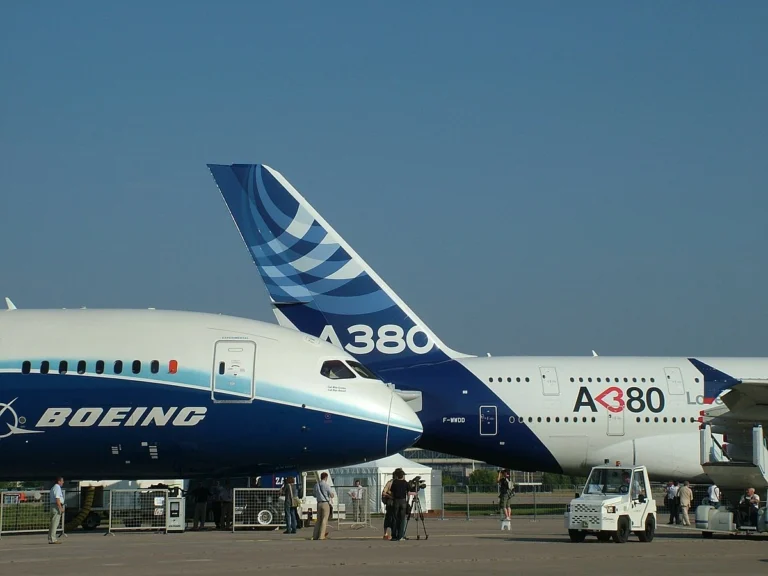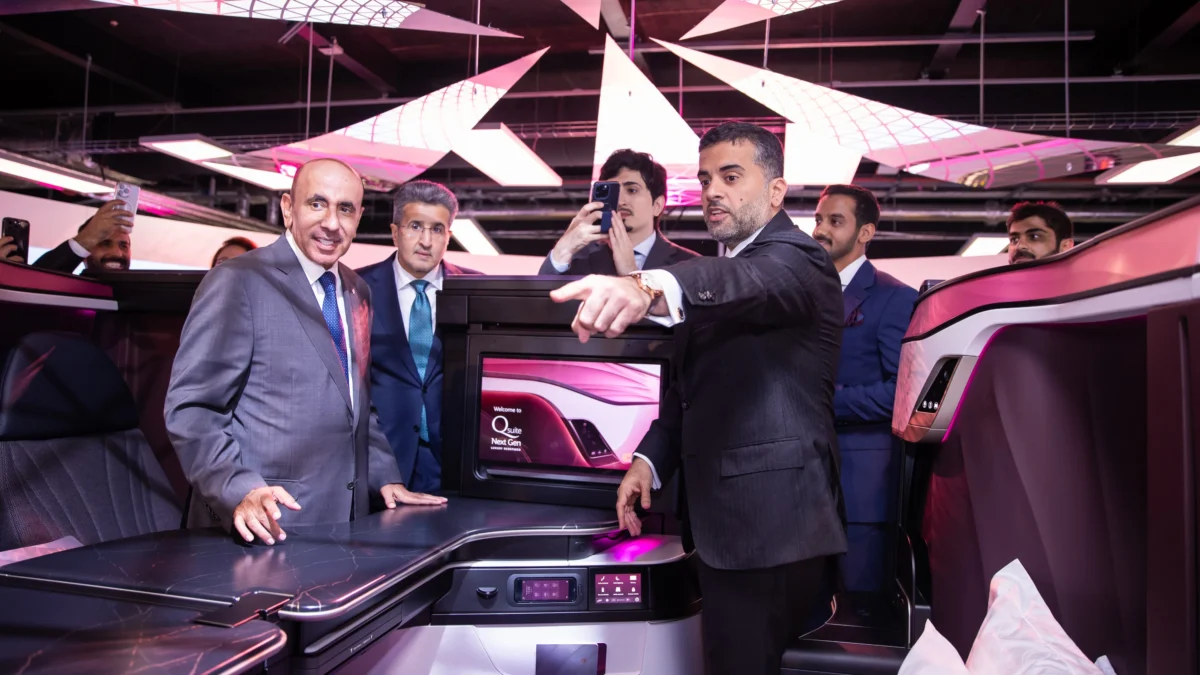“Aviation’s Great Heist: Uncovering the Airbus-Boeing Technology Swap” In the cutthroat world of commercial aviation, innovation is the name of the game. Where one manufacturer leads, another is hot on its heels, racing to stay ahead of the competition. But what happens when a company allegedly “borrows” a game-changing technology from its arch-rival, without so much as a nod of gratitude? Welcome to the fascinating – and contentious – tale of how Airbus allegedly swiped a revolutionary aircraft technology from Boeing. In this article, we’ll take you on a journey behind the scenes, exploring the intricacies of this aviation drama and shedding light on the alleged “great heist.” Get ready to take off on a thrilling ride through the world of aeronautical espionage, technological wizardry, and the never-ending quest for air superiority.
A Tale of Two Winglets: Airbus and Boeing’s Legal Controversy

Winglet technology emerged as a transformative advancement for commercial aviation during the 1980s, following successful adaptation on smaller aircraft throughout the previous decade. NASA Spinoff documented the introduction of enhanced wingtips to modern commercial jets, marking the beginning of widespread efficiency improvements across the industry.
The Boeing 747-400 and McDonnell Douglas MD-11 pioneered winglet implementation on large commercial aircraft by the decade’s end, establishing foundations for future technological developments. The technology addressed aerodynamic challenges by reducing vortices created at wing tips, where high-pressure air below wings meets low-pressure air above. These vortices generate drag that increases fuel consumption, making winglet solutions economically attractive for airlines seeking operational cost reductions.

Wingtip Fences on A320 Aircraft and Its Retrofit Programs
Airbus equipped A320 aircraft with wingtip fences before Boeing introduced blended winglets, addressing efficiency concerns through different technological approaches. These fence-style wingtips served similar aerodynamic purposes as modern Sharklets, though with reduced effectiveness compared to later blended designs.
The A320 program incorporated wingtip fences as standard equipment for most production aircraft, with only early models lacking this efficiency enhancement. Airbus extended fence technology to A300 and A310 aircraft through retrofit programs, while the A380 received fence wingtips as a default configuration.

A380 Default Configuration: Fence Wingtips for Efficiency
Despite early wingtip innovation, Airbus recognised superior efficiency potential in blended winglet designs. The manufacturer initiated collaboration with Aviation Partners in 2008 to develop blended winglet solutions for A320 family aircraft.
Airbus Collaboration with Aviation Partners and Allegations of Theft

Aviation Partners conducted initial A320 blended winglet testing in 2008, yielding disappointing performance results that concerned Airbus engineers. Subsequent flight tests using a JetBlue A320 produced significantly improved data, encouraging continued development efforts.
Airbus unveiled the Sharklet design following successful testing phases, but the announcement triggered legal action from Aviation Partners. Aviation Partners alleged that Airbus copied proprietary blended winglet designs without authorization, initiating litigation against Airbus.
Legal Proceedings and Litigation – A Complex Dispute
The legal controversy surrounding Airbus’ alleged theft of Boeing’s winglet technology has a complex history, with both parties accusing each other of unfair practices. The dispute has significant implications for the aviation industry, as it may affect the development of future aircraft technology.
The legal proceedings are a result of Airbus’ collaboration with Aviation Partners, which allegedly led to the copying of proprietary designs. The dispute highlights the importance of intellectual property protection in the aviation industry.
Implications and Practical Aspects of Winglet Technology
Fuel savings and operational cost reductions are significant benefits of winglet technology, making it a game-changer for airlines. The technology has the potential to reduce fuel consumption, leading to lower emissions and operating costs.
Fuel Savings and Operational Cost Reductions: A Game-Changer for Airlines
Southwest Airlines, for example, has reported an annual fuel savings of approximately 100,000 gallons per aircraft, demonstrating substantial economic benefits. The technology has the potential to reduce fuel consumption, lower emissions, and operating costs, making it an attractive solution for airlines.
Lessons Learned from the Airbus-Boeing Dispute: The Future of Aircraft Technology
The Airbus-Boeing dispute highlights the importance of intellectual property protection in the aviation industry. The dispute also underscores the need for collaboration and innovation in the development of aircraft technology.
The future of aircraft technology will depend on the ability of manufacturers to develop innovative solutions that address the challenges of fuel efficiency, emissions, and safety. The dispute between Airbus and Boeing serves as a lesson for the industry, highlighting the need for collaboration and respecting intellectual property rights.
Conclusion
Conclusion: Unraveling the Complexities of Aviation Innovation
In our in-depth exploration of “Airbus Stole this Aircraft Technology from Boeing? – Aviation A2Z,” we delved into the intricate world of aviation innovation, where collaborations and rivalries shape the future of flight. Our analysis revealed a complex web of innovations, where Airbus and Boeing have engaged in a series of technological advancements, often sparking controversy and debate. We examined the development of the raked wingtip, a seemingly innocuous design element, which has been at the center of a high-stakes dispute between the two aviation giants. Through a detailed examination of the facts, patents, and industry reports, we shed light on the often-misinterpreted notion of “stealing” and exposed the collaborative nature of innovation in the aviation sector.
The significance of this topic extends far beyond the confines of the aviation industry, highlighting the importance of intellectual property, collaboration, and innovation in modern technology development. As the aviation sector continues to push the boundaries of innovation, the implications of this story serve as a reminder of the complex relationships between companies, governments, and regulatory bodies. As we look ahead, it is clear that the aviation industry will continue to evolve, with technological advancements driving growth, efficiency, and sustainability. However, as we strive for innovation, we must also acknowledge the delicate balance between collaboration and competition, and the importance of respecting the intellectual property that fuels progress.
In conclusion, the story of Airbus and Boeing is a testament to the dynamic and ever-evolving nature of innovation in the aviation sector. As we navigate the complexities of technological advancements, it is essential to approach this topic with a nuanced understanding of the intricate relationships between companies, governments, and regulatory bodies. As we look to the future, one thing is clear: innovation will continue to propel the aviation industry forward, but it will be the collaborative spirit and respect for intellectual property that will ultimately define its success. The question remains: what’s next in the world of aviation innovation?